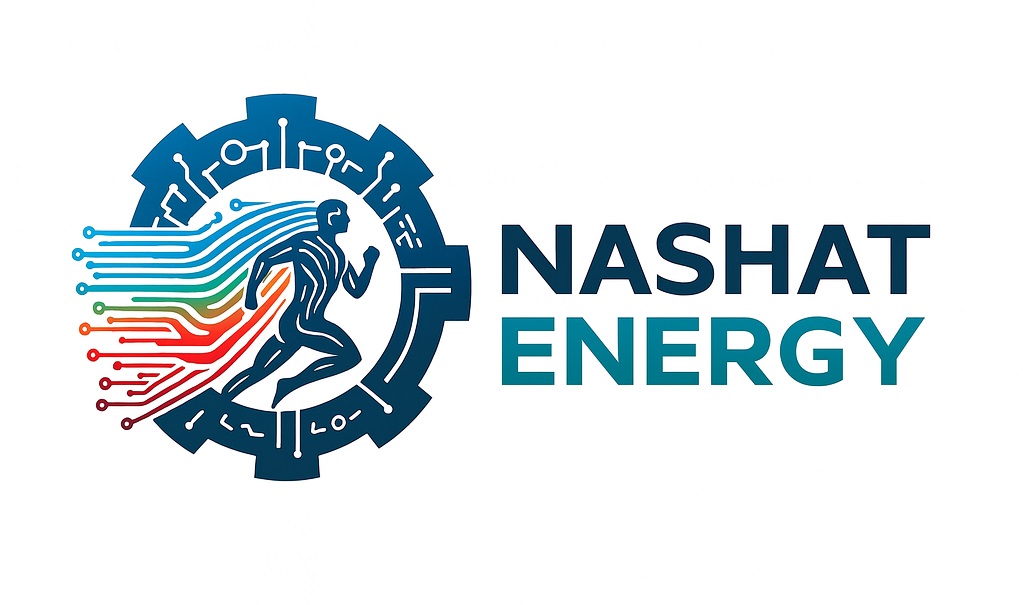

Driving Efficiency with Smart Energy Audit, Monitoring, and Controls. P.O.Box 20898 Al Qusais Dubai, UAE
Smart controls + AI continuously predict, optimize, and automate HVAC, lighting, and loads using sensor data and tariffs. In the GCC, initiatives like Dubai’s smart grid strategy (AED 7B / ~$1.9B) and new real-time city platforms signal an autonomous, low-waste future for facilities. Start by instrumenting spaces (IoT), piloting one automated zone, and building a multi-phase roadmap to scale.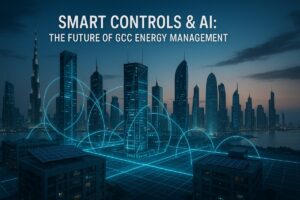
The UAE and wider GCC have laid serious groundwork for digital energy. DEWA’s smart grid strategy—with cumulative investment around AED 7B (~$1.9B)—is designed to enable advanced automation across electricity and water networks through 2035. Meanwhile, Dubai’s new real-time, AI-powered “city command” systems show how urban operations are moving toward predictive, autonomous control. For facilities, this means the infrastructure and policy climate are aligned for next-step energy automation.
Energy automation = systems adjust usage in real time (no human intervention) via AI models or rule logic.
Optimization = continuously refining setpoints and schedules to hit peak efficiency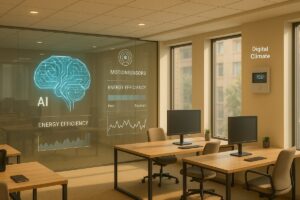 at lowest cost.
at lowest cost.
Examples you can deploy now:
1. Smart lighting dims with daylight and occupancy.
2. AI-controlled HVAC learns occupancy curves + weather forecasts to pre-cool/pre-heat precisely.
3. Load scheduling shifts high-draw processes to off-peak or solar-peak windows.
Together, buildings evolve from reactive consumers into self-tuning assets.
See also: Smart Control, AI-Powered Energy Analytics, Predictive Maintenance
Granular data from occupancy, AQ, temperature, vibration, and power meters flows to a central platform. High-resolution data is the bedrock for reliable automation.
Models predict cooling/heating needs, detect anomalies, and continually re-optimize setpoints, delivering savings that human operators typically miss.
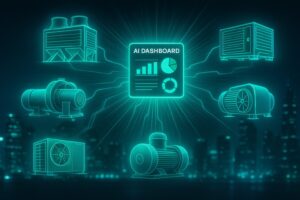
Modern BMS integrates HVAC, lighting, blinds, metering, and DERs (PV, storage). It can execute AI recommendations automatically or follow robust rules.
Edge controllers and 5G/low-latency networks enable split-second decisions—vital for industrial lines, hospitals, or grid-response signals in the GCC’s hot climate.
1. Extra 10–15% savings on top of typical 20–30% realized from monitoring + manual optimization, by eliminating micro-inefficiencies.
2. Instant response: lights/HVAC in unoccupied zones switch off immediately based on live sensors.
3. Demand response & tariff optimization: automated shedding/shifting during peak windows cuts bills and eases grid strain.
4. Comfort & reliability: AI keeps tight environmental bands (crucial for hospitals, labs, data centers) without sacrificing comfort—driving tenant satisfaction and uptime.
(Actual results vary by baseline and building type.)
Explore: Commercial Spaces, Renewable Integration Strategy, Retrofit & Upgrade Planning
1. Smart Factory (Industry 4.0):
If one line idles, related HVAC and process loads ramp down in that zone. Heavy draws auto-shift to solar-peak or off-peak tariffs.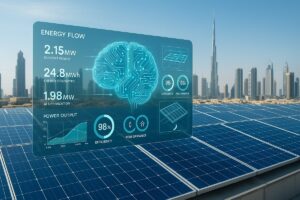
2. Office / Commercial Tower:
Occupancy-aware lighting per floor; pre-cooling before occupancy; auto blinds to reduce solar gain while preserving comfort.
3. Clinics & Hospitals:
Critical rooms maintain strict temperature/humidity and air changes; non-critical wings scale back when idle—no comfort compromise.
4. Data Centers:
AI load-balances compute to minimize hotspots; coordinates with cooling plant to reduce PUE and peak demand.
5. Homes & SMBs:
Smart thermostats, appliance scheduling, and (as TOU/net metering matures) automated home energy management for measurable savings.
1. DEWA Smart Grid (2021–2035): platform for digitalization, analytics, and automated control—an enabling layer for facility-level AI.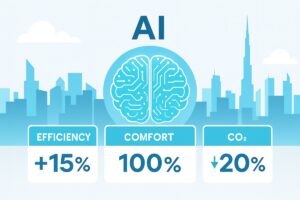
2. Dubai’s Real-Time Operations Platforms: new AI-powered tools (e.g., DANA) show a shift to predictive, integrated control at city scale.
3. Smart-city momentum across UAE: ongoing initiatives in digital utilities, leak detection, and urban digitalization strengthen the business case for automated demand-side efficiency.
1. Instrument your spaces
Start with sub-metering, IAQ sensors, and granular occupancy. Ensure your data lands in a secure platform.
→ Use: AI-Powered Energy Analytics
2. Pilot one automated zone
Deploy a smart lighting zone or AI thermostat in a representative area. Validate comfort + savings; document operating playbooks.
→ Use: Smart Control
3. Harden O&M & data quality
Tighten maintenance routines, calibrations, and naming standards to feed reliable data into models.
→ Use: Predictive Maintenance
4. Build a multi-phase roadmap (12–24 months)
Sequence quick wins (scheduling, static setpoint optimization), then scale to AI-supervised autonomous control across HVAC, lighting, and DERs.
→ Use: Retrofit & Upgrade Planning and Renewable Integration Strategy
Q1. What’s the fastest ROI step?
Pilot one automated zone (lighting or HVAC) with clear measurement. Many sites see payback within months when starting from manual control.
Q2. Do we need a new BMS?
Not always. Many modernizations layer edge controllers and analytics onto existing systems to enable autonomy.
Q3. Will automation reduce comfort?
No—properly tuned AI holds comfort bands and often improves them by anticipating occupancy and weather shifts.
Q4. How does this align with GCC policy?
Dubai and DEWA are advancing smart grids and real-time operations, creating a strong environment for facility-level automation and demand flexibility.
Nashat Energy continuously evaluates, integrates, and hardens the latest automation and AI tooling suited to GCC conditions, ensuring clients can transition seamlessly from manual optimization to autonomous operations—with governance, safety, and savings front and center.
Ready to see measurable savings without sacrificing comfort?
Book a Smart Control Pilot with Nashat—scope, sensors, and success metrics in 2 weeks—then scale with confidence.